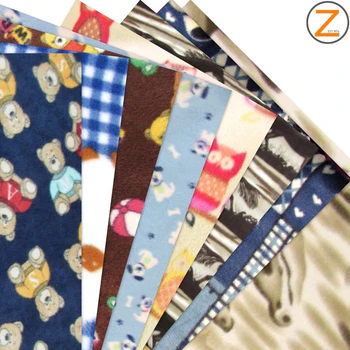Most people’s understanding of fabric outside of those in an industry dealing with it is probably limited to blankets and other soft-touch experiences. This means that fleece and minky fabric are probably the types of fabric people imagine when they first hear the word “fabric”. So when it comes to using one or the other in a project you might be wondering which is which and why one is better than the other. This blog hopefully gives you a point by point high level comparison of fleece vs minky. Both are great, and both have unique traits that might be better in one application than another.

Fleece and Minky: Unraveling the Misconceptions
- “All Fleece is the Same”:
- Varieties of Fleece: Not all fleece fabrics are identical. There are various types based on their thickness, softness, and intended purpose.
- Polar Fleece: A thicker variant of fleece, which is known for its warmth. It’s an excellent insulator and is often used in winter garments.
- Microfleece: Lighter and thinner than polar fleece, it’s perfect for layering or for climates that aren’t extremely cold.
- Blizzard and Anti-pill Fleece: These are typically medium-weight fleeces, with anti-pill having a treatment to prevent the fabric from forming small balls or “pills” on the surface after wear or washing.
- Composition: While traditional fleece is derived from polyester, there are blends (with cotton or wool) and even eco-friendly versions made from recycled plastic bottles.
- Varieties of Fleece: Not all fleece fabrics are identical. There are various types based on their thickness, softness, and intended purpose.
- Minky (or Cuddle Fabric):
- Common Misconception – “Fleece is Naturally Derived”:
- Many people assume fleece is a natural material because the term “fleece” traditionally refers to the coat of sheep or other animals. However, in the context of fabric, fleece usually refers to a man-made material derived from polyester. It was developed as an alternative to wool that could provide warmth without the weight and care complexities of natural wool.
- Functionality:
- Both fleece and minky are known for their warmth. However, minky, with its plush feel, is often favored for baby products like blankets, clothes, and even cloth diapers. Fleece, on the other hand, is versatile and can be found in a wider range of products, from jackets and hats to blankets and throws.
- “Minky and Fleece are Interchangeable in Projects”:
- Given their different properties, while you can sometimes substitute one for the other in projects, it’s essential to understand the differences. Minky’s plushness might not always be suitable for projects that require a lighter, more breathable fabric, and its slippery nature can make it more challenging to sew than fleece.
- Stuffed Animals / Plushies: Minky is the preferred fabric for toys, stuffed animals, and plushies because of its extreme softness and “fun to touch” characteristics. If you’re in a baby store or toy store and looking at anything soft to play with, it is most likely Minky fabric.
- Costuming: Minky is often used in costuming as well because of it’s stretch characteristics. We mix some spandex into our Mochi Stretch Minky line to give a 4-way stretch.
- Apparel: Fleece is most often found in apparel because it can offer some extra warmth and durability.
- Blanketing: Fleece blankets are the norm! This is why we carry such a wide variety of fun print fleece fabric.+
- Given their different properties, while you can sometimes substitute one for the other in projects, it’s essential to understand the differences. Minky’s plushness might not always be suitable for projects that require a lighter, more breathable fabric, and its slippery nature can make it more challenging to sew than fleece.
Summary: Fleece and Minky are similar but different
While fleece and minky might appear similar at first glance, understanding their differences can significantly impact the outcome and satisfaction of a sewing or purchasing decision. The best way to think about this is this way; If you really want to cuddle and stroke the project then Minky is the way to go. If you’re going to wear it or bundle up with it, it’s likely that Fleece is your better option.
FAQs About Fleece and Minky at Big Z Fabric
Q: What are the main differences between fleece and minky fabrics?
A: Fleece is generally more durable and breathable, making it ideal for apparel and outdoor gear. Minky offers a plush, velvety texture perfect for baby products and plush toys but is less breathable.
Q: Can I use minky fabric for clothing projects?
A: Yes, especially if you blend it with spandex for added stretch. Minky is great for creating comfortable and luxurious garments.
Q: How should I care for minky fabric to maintain its softness?
A: Wash minky on a gentle cycle with mild detergent and avoid high heat drying to prevent melting and maintain its plush texture.
Q: Do you offer different types of fleece fabrics at Big Z Fabric?
A: Yes, we offer a variety of fleece types, including polar fleece, microfleece, and anti-pill fleece, each suited for different projects.
Q: Can I purchase swatches of fleece and minky before making a large order?
A: Absolutely! We provide fabric swatches so you can assess the color, texture, and quality before committing to a larger purchase.




